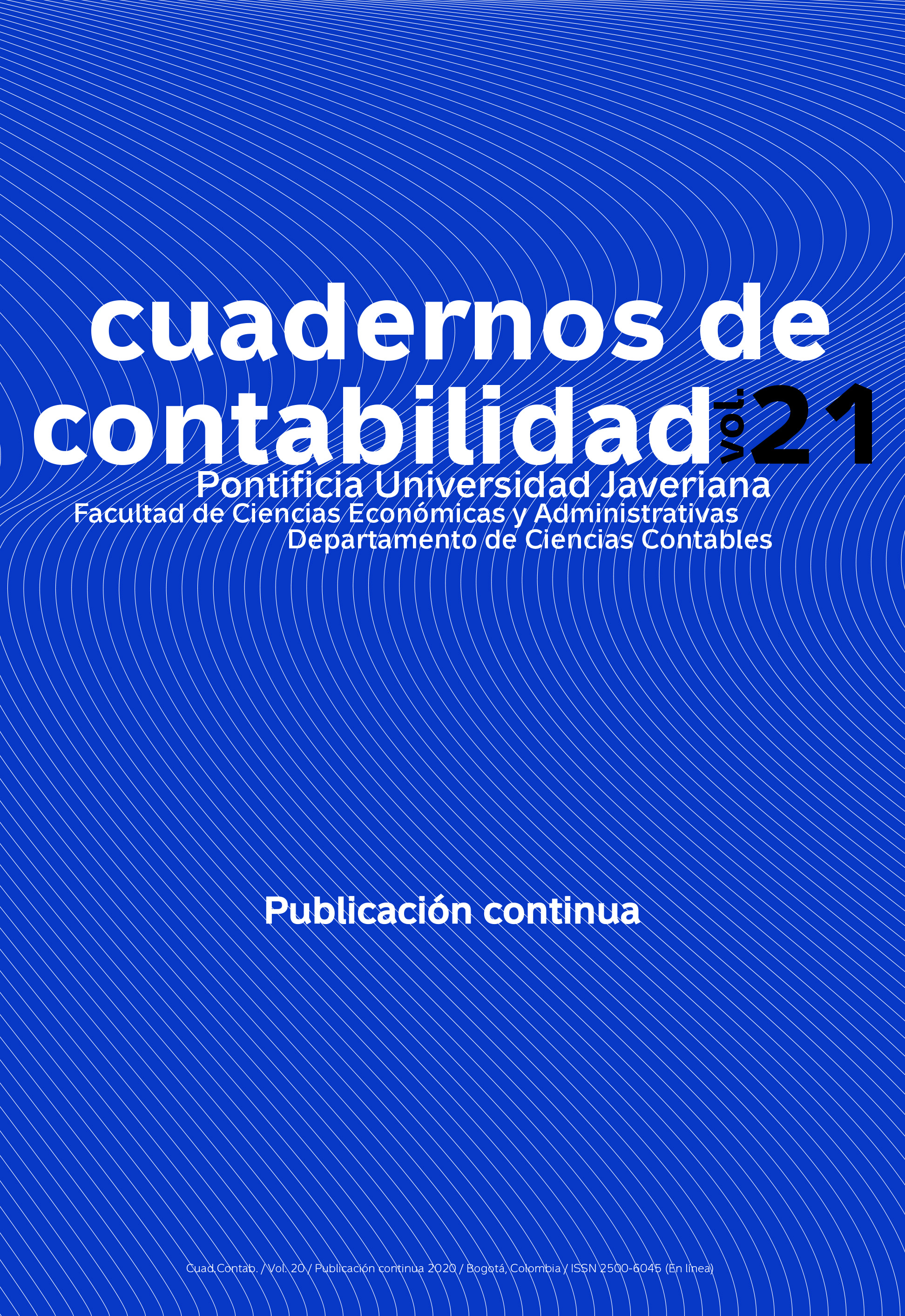Abstract
This paper analyses the typical ABC method in the activities and resources identification stage, as well as in the stages of primary and secondary inductors definitions. A review of the literature from 2010 to 2020 does not show the application of the ABC in supply chain logistics. Therefore, it was made a case study to assess the application of ABC in this area. The ABC with a Monte Carlo simulation model was applied in the process of transport and distribution of a cement supply company located in Medellín city, which serves three markets: Bogotá, Cali, and Barranquilla. The study shows that applying the model allows improving decision-making support, as well as its effectiveness, integrating uncertainty in costing.
Duque, M., Gómez, L., & Agudelo, J. (2009). Análisis de los sistemas de costos utilizados en las entidades del sector salud en Colombia y su utilidad para la toma de decisiones. Revista Digital del Instituto Internacional de Costos, 1(12), 495-525. http://www.revistaiic.org/articulos/num5/articulo21_esp.pdf
Ghadge, P., & Srivastava, S. (2017). Challenges and opportunities in computing logistics cost in e-commerce supply chain. Proceedings of the International Conference on Industrial Engineering and Operations Management. Rabat, Morocco, April 11-13, 5765-5766. http://ieomsociety.org/ieom2017/papers/594.pdf
Guijarro-Rodríguez, A., Cevallos-Torres, L., Valencia-Nuñez, E., Wilches-Medina, A., & Correa-Barrera, V. (2018). Analysis of transport logistics costs in supply chain management by applying fuzzy logic. Communications in Computer and Information Science, 798, 145-159. https://doi.org/10.1007/978-3-319-72727-1_11
Jiang, L., Wang, Y., & Liu, D. (2016). Logistics cost sharing in supply chains involving a third-party logistics provider. Central European Journal of Operations Research, 24(1), 207-230. https://doi.org/10.1007/s10100-014-0348-5
Mauleón, M. (2006). Logística y costos. Madrid: Ediciones Díaz de Santos.
Muscatello, J. R., Parente, D. H., & Swinarski, M. (2018). Aligning supply chain logistics costs via ERP coordination. International Journal of Information System Modeling and Design, 9(2), 24-43. https://doi.org/10.4018/IJISMD.2018040102
Škerlič, S., & Muha, R. (2016). The importance of systems for controlling logistics costs in the supply chain: A case study from the Slovenian automotive industry. Promet - Traffic - Traffico, 28(3), 299-310. https://doi.org/10.7307/ptt.v28i3.1881
Xinhao, J. (2011). Based costing management of supply chain logistics costs. International Journal of Advancements in Computing Technology, 3(11), 317-324. https://doi.org/10.4156/ijact.vol3.issue11.40
Yang, Q., & Zhu, H. (2013). Supply chain coordination mechanism logistics cost optimization analysis. Advanced Materials Research, 785-786, 1473-1476. https://doi.org/10.4028/www.scientific.net/AMR.785-786.1473
Zhou, C.-Y., Fan, H.-R., & Jiang, W. (2011). An model for supply chain logistics cost management based on analytic hierarchy process. 5, 269-273. https://doi.org/10.1109/ICBMEI.2011.5914475
Zou, J., & Shan, L. (2013). 3PL-HUB supply chain logistics cost simulation study based on system dynamics. Advanced Materials Research, 779, 1752-1757. https://doi.org/10.4028/www.scientific.net/AMR.779-780.1752
Kaplan, R. S., & Cooper, R. (2003). Coste y Efecto: Como Usar el ABC, el AMB y el ABB para Mejorar la Gestion, los Procesos y la Rentabilidad, 1.a ed. Nueva York: Grupo Planeta.
Tafur, J. C., & Osorio, J. A. (2013). Costeo basado en actividades ABC: Gestión basada en actividades ABM, 1.a ed. Bogotá: Ecoe Ediciones.
Toro, F. (2016). Costos ABC y presupuestos, 1.a ed. Bogotá: Ecoe Ediciones.
Jiménez, F., & Espinoza, C. (2016). Costos industriales, 1ª ed. Cartago: Editorial Tecnológica de Costa Rica.
El aval sobre la intervención de la obra (revisión, corrección de estilo, traducción, diagramación) y su posterior divulgación se otorga mediante una licencia de uso y no a través de una cesión de derechos, lo que representa que la revista y la Pontificia Universidad Javeriana se eximen de cualquier responsabilidad que se pueda derivar de una mala práctica ética por parte de los autores. En consecuencia de la protección brindada por la licencia de uso, la revista no se encuentra en la obligación de publicar retractaciones o modificar la información ya publicada, a no ser que la errata surja del proceso de gestión editorial. La publicación de contenidos en esta revista no representa regalías para los contribuyentes.



